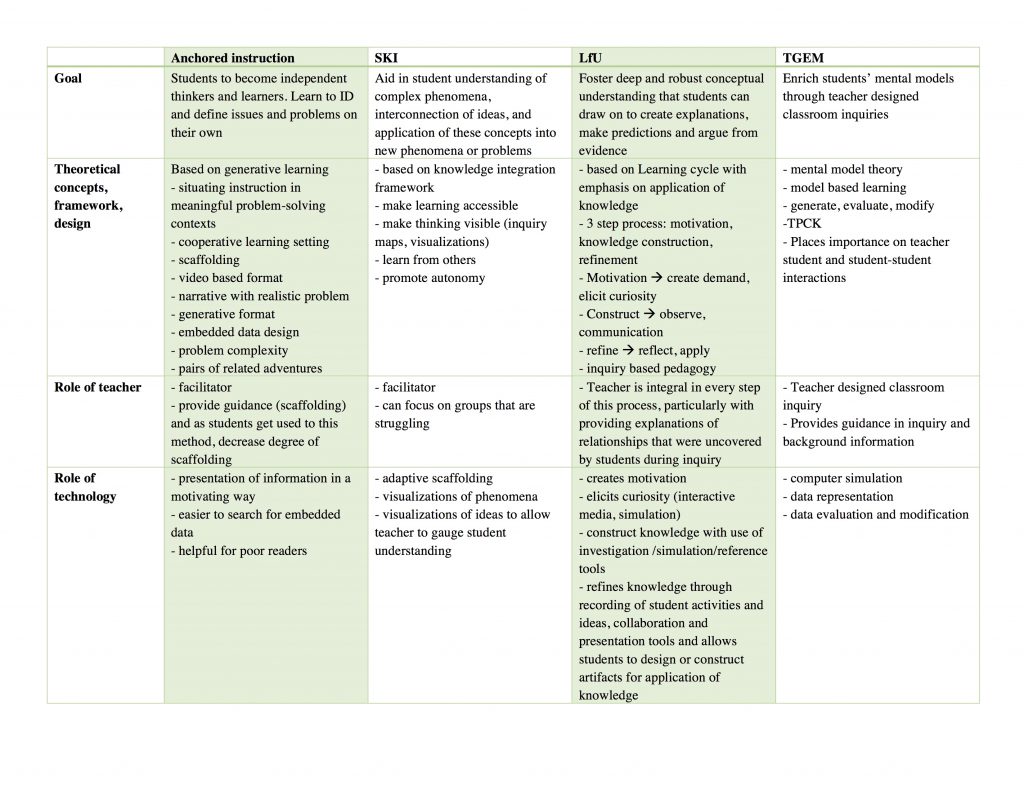I decided to summarize the 4 TELEs in table format. This is what I came up with:

Below is a link to a PDF in case the above does not read well.
Module B synthesis
Synthesis
All methods noted in the table are based on constructivist learning theories. All methods aim to achieve a deeper understanding of complex phenomena or concept in math and/or science. I found that the use of technology for presentation of information was the same in each TELE, however, the degree to which technology was used for other things differed. For example, in the Jasper series (Anchored instruction), technology use was limited to presentation of information, whereas in WISE (SKI), MyWorld (LfU), and Chemland (T-GEM), it was also used for data evaluation, visualization of ideas and collaboration. The TELEs also differed in the degree of guidance or scaffolding that was provided as well as the provider of that scaffolding. For Jasper, the purpose was for generative learning, and thus minimal scaffolding would be provided (though this can be adjusted dependent on the preference of the teacher and experience of the students). In contrast, with MyWorld, the teacher provides guidance at each step and also provides explanations of relationships that were uncovered by students during the knowledge construction observation stage. In Jasper, MyWorld, and Chemland scaffolding was provided by the teacher. However in the WISE projects, much of the scaffolding was provided by technology in combination with the teacher particularly for those groups that were struggling.
